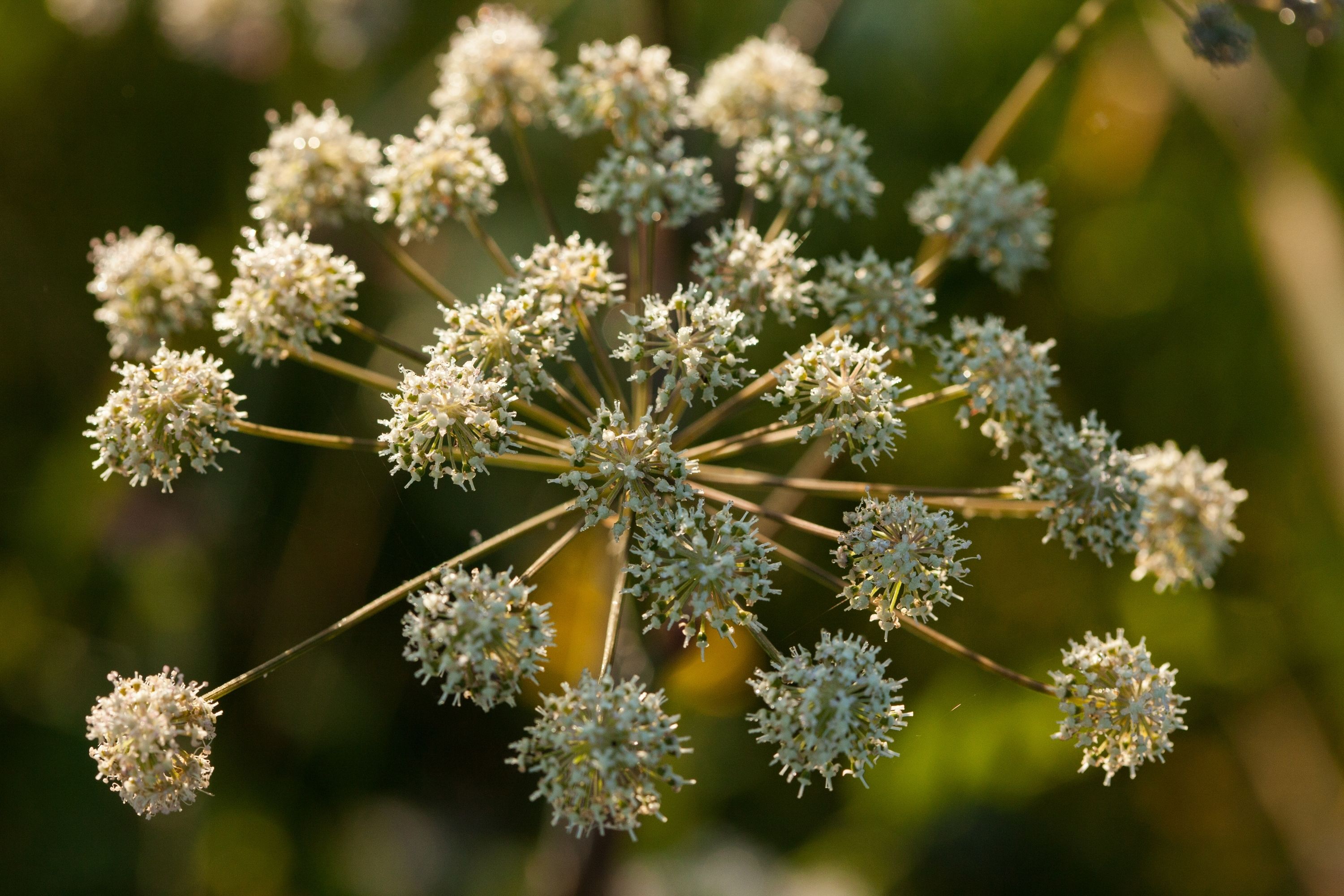Wild angelica
(Angelica sylvestris)

Description
Angelica sylvestris or wild angelica is a species of flowering plant, native to Europe and central Asia. An annual or short-lived perennial growing to a maximum of 2.5 metres (8.2 ft), it has erect purplish stems and rounded umbels of minuscule white or pale pink flowers in late summer. The Latin specific epithet sylvestris means “growing in woodland”. However it tolerates a range of conditions including fields, hedgerows, open woods, marshes and fens. It will grow in light (sandy), medium (loamy) and heavy (clay) soils. It has recently been determined to be an invasive weed in New Brunswick and Cape Breton, Nova Scotia, Canada. "According to the New Brunswick Invasive Species Council, unless this species is controlled, Woodland Angelica could spread throughout Canada, overwhelming other vegetation." The flowers are visited by a wide array of insects and are thus characterised by a generalised pollination system. Adult wasps of Dolichovespula norwegica are known to feed off the nectar provided by A. sylvestris. A. sylvestris is cultivated in gardens. The cultivar 'Ebony', with pink flowers, has gained the Royal Horticultural Society’s Award of Garden Merit. It was used as a vegetable until the 20th century. The plant can be stored. The stem was eaten fresh, and the leaves could be boiled to a stew for storage or cooked with milk. The plant has also been used for dyeing. Angelica is a genus of about 60 species of tall biennial and perennial herbs in the family Apiaceae, native to temperate and subarctic regions of the Northern Hemisphere, reaching as far north as Iceland, Lapland and Greenland. They grow to 1–3 m (3 ft 3 in – 9 ft 10 in) tall, with large bipinnate leaves and large compound umbels of white or greenish-white flowers. Found mainly in China, its main use was for medicine. It shows variations in fruit anatomy, leaf morphology and subterranean structures. The genes are extremely polymorphic. Some species can be found in purple moor and rush pastures. Angelica species grow to 1–3 m (3 ft 3 in – 9 ft 10 in) tall, with large bipinnate leaves and large compound umbels of white or greenish-white flowers. Their large, sparkling, starburst flowers are pollinated by a great variety of insects (the generalist pollination syndrome), the floral scents are species-specific, and even specific to particular subspecies.
Taxonomic tree:







